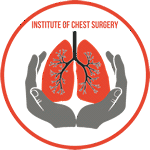A Tracheoesophageal Fistula (TEF) is a congenital condition that affects the development of the esophagus and trachea during fetal growth. It results in an abnormal connection between the trachea (windpipe) and the esophagus (food pipe). TEF is a challenging medical condition that requires prompt diagnosis and specialized treatment. In this article, we will explore the long-term outlook for individuals living with a Tracheoesophageal Fistula, focusing on the management of this condition and the potential impacts on their health and quality of life.
Understanding Tracheoesophageal Fistula (TEF)
A Tracheoesophageal Fistula occurs during the early stages of fetal development when the tissues forming the trachea and esophagus fail to separate completely. As a result, an abnormal connection forms between these two vital structures. This condition can manifest in various types and severity levels, with some cases involving a connection between the trachea and esophagus, while others may include additional malformations of the esophagus.
TEF can lead to several complications, such as difficulty swallowing, aspiration (when food or liquids enter the lungs), respiratory issues, and recurrent lung infections. The severity of the condition, associated anomalies, and timely intervention greatly influence the long-term prognosis for individuals with TEF.
Long-Term Outlook for Individuals with TEF
The long-term outlook for someone with a Tracheoesophageal Fistula depends on several factors, including early diagnosis, the effectiveness of surgical intervention, and the presence of associated congenital anomalies. In most cases, early diagnosis and prompt treatment are crucial for better outcomes.
1. Surgical Intervention
Surgery is the primary mode of treatment for Tracheoesophageal Fistula. The procedure aims to correct the abnormal connection between the trachea and esophagus, allowing for improved respiratory and feeding functions. Surgical repair of TEF is typically performed shortly after birth or once the child is stable enough for the operation.
The success of the surgical repair plays a pivotal role in determining the long-term prognosis. In many cases, advancements in surgical techniques and pediatric anesthesia have significantly improved outcomes, leading to better survival rates and reduced complications.
2. Associated Anomalies
The presence of other associated congenital anomalies can impact the long-term outlook for individuals with TEF. Some children born with TEF may have additional congenital conditions affecting other organs, such as the heart, kidneys, or musculoskeletal system. The management of these associated anomalies may require further medical intervention and can influence the overall prognosis.
3. Respiratory Function
TEF can have a significant impact on respiratory function, especially if aspiration of food or liquids occurs frequently. Chronic lung infections and respiratory difficulties are potential long-term challenges for individuals with TEF. However, with appropriate management and respiratory support, many patients can achieve satisfactory lung function and lead relatively normal lives.
4. Feeding Difficulties
Feeding difficulties are common in infants with TEF due to the abnormal connection between the trachea and esophagus. Infants may experience choking, gagging, or difficulty gaining weight. Feeding support, such as specialized bottles and feeding techniques, may be necessary to ensure proper nutrition and growth.
In some cases, children may require a temporary feeding tube until they are ready to transition to oral feeding after surgical repair. With proper care and support, most children learn to feed orally and overcome these challenges over time.
5. Gastroesophageal Reflux Disease (GERD)
GERD, a condition where stomach acid flows back into the esophagus, can be a concern for individuals with TEF. The abnormal anatomy caused by TEF can contribute to GERD. Long-term management may involve medications, dietary adjustments, and lifestyle changes to reduce reflux symptoms.
6. Follow-Up Care
Regular follow-up appointments with pediatric specialists are crucial for monitoring the progress and managing potential complications associated with TEF. Pediatric surgeons, pulmonologists, gastroenterologists, and other healthcare providers work together to provide comprehensive care for these patients.
Improving Quality of Life
Despite the challenges posed by Tracheoesophageal Fistula, advancements in medical care and surgical techniques have significantly improved the quality of life for affected individuals. Early diagnosis, timely intervention, and dedicated long-term care can make a substantial difference in the overall well-being of those living with TEF.
Support from healthcare professionals, family, and a strong support network can help individuals with TEF overcome hurdles and thrive. Moreover, as they grow older, many individuals with TEF adapt well to their condition and lead fulfilling lives, pursuing various interests and activities just like any other person.
Conclusion
The long-term outlook for someone with a Tracheoesophageal Fistula depends on various factors, including early diagnosis, the effectiveness of surgical intervention, and the presence of associated congenital anomalies. Prompt surgical repair, appropriate management of associated conditions, and comprehensive follow-up care can significantly improve the quality of life for individuals living with TEF.
As medical knowledge and technology continue to advance, we can expect further improvements in the long-term prognosis and quality of life for those affected by this congenital condition. With proper medical attention and support, individuals with TEF can look forward to a bright and hopeful future.







